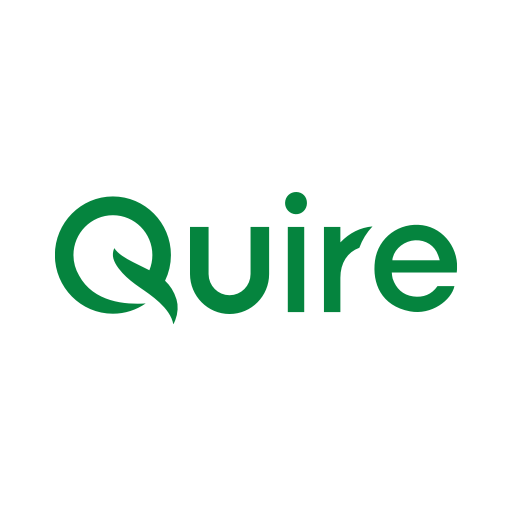productivity tips · Jan 27, 2022
Productive Downtime: a New Productivity Method to Implement in 2022

It is no secret that the standard model for productivity is broken. Burnout is rampant in the corporate world, with workers pushed to their limits in an attempt to achieve more.
But, quite often, in an attempt to achieve more—less is done. We think we’re being productive but really, all we’re doing is completing work for the sake of it. And too often, this results in poor quality work, that either has to be redone, or negatively impacts the business’s image with a client
What if there was a better way than working until your burnt out? What if productivity could be achieved without sacrificing employee wellbeing?
In order to combat the negative consequences of reactive downtime, we need to find a way to engage in proactive downtime.
Productive downtime is a relatively new productivity method that can be implemented with every remote team.
This type of downtime is all about taking breaks throughout the day to allow employees time to relax and rejuvenate. This not only leads to increased productivity but also helps foster creativity and innovation.
Read more on how to win as a remote team and productivity advice from Quire Community Manager
The forgotten art of doing nothing
We are all so busy nowadays. Always on the go, constantly checking our phones and email, trying to get things done. But what if we told you that one of the most productive things you can do is actually nothing?
It may sound counterintuitive, but it is, nevertheless, true. Studies have shown that taking regular breaks and spending time doing nothing can actually help improve your productivity and creativity.
In fact, some experts refer to this as the “divine art of doing nothing.”
So how do you go about doing nothing? Pretty simply, it turns out. Just take a few minutes every day to relax and de-stress. Unplug from your devices, close your eyes, and focus on your breath.
You can also try some simple meditation or visualization exercises. Or if you’d rather, just take a walk-in nature or listen to calming music.
The key is to find what works best for you and make time for it in your schedule. And if you’re sorting out deadlines for employees, factor in their need for a little productive downtime in the schedule.
If you can find an hour or two each week to relax and rejuvenate, you’ll be much more productive during the rest of your day. So, forget about “multitasking” and start practicing the forgotten art of doing nothing.
Read more on 7 productivity tips to avoid burnout at work.
Why resetting your idea of goals and milestones is a part of productive downtime
Downtime is essential for recharging your batteries and coming up with new ideas. However, not all downtime is created equal. In order to get the most out of your downtime, you need to be strategic about how you spend it.
One way to maximize your downtime is by resetting your goals and milestones. This involves taking a step back and re-evaluating where you are and where you want to be. It can also involve redefining what success means to you and setting new goals accordingly.
This process can be difficult, but it is important to remember that this is a part of preventing burnout and being more productive. The key is to be patient and to make sure that you are always learning from your mistakes.
Productive downtime is essential for any business. By resetting your goals and milestones, you can make the most of your downtime and continue to grow as a business leader.
Slow down to speed up
The popular idea is that the best way to achieve productivity is to work hard and fast. But is this really the case? As we have already mentioned, slowing down can help employees be more productive. And this is backed research which suggests as much.
In a study by software company Memory(AI), it was found that workers who take regular breaks are 33% more productive than those who don’t. The study also showed that workers who take time for themselves outside of work are 20% more productive than those who do not.
This is not surprising when you consider how overworked many people are nowadays. With so much to do and not enough time to do it, it makes sense that we would try to maximize our efficiency by working as hard and fast as possible.
Except that this is not sustainable in the long run. In order to be productive, we need time to relax and rejuvenate. Which is where downtime comes in.
Downtime is essential for our mental health and productivity. It allows us to process information and come up with new ideas.
So, the next time you are feeling overwhelmed and stressed, try slowing down. Take a break, go for a walk, or just relax for a bit. You may be surprised at how much more productive you become as a result.
How to implement productive downtime in your organization
So how can you implement productive downtime in your organization? Here are a few tips:
Encourage staff to take short breaks throughout the day. This can be as simple as taking a quick walk or spending five minutes stretching.
Allow employees to work remotely. Giving staff the opportunity to take breaks away from their desks can help them rejuvenate and stay productive (tips specifically for remote workers will be explained in the next section).
Encourage creativity and innovation. One of the benefits of productive downtime is that it allows employees to explore new ideas and be creative. Encouraging creativity can lead to breakthroughs in productivity and innovation.
Have a set time every day where employees are allowed to check their personal email, social media, and so on. This will give employees a sense of control over their downtime and help them to avoid feeling overwhelmed by work.
Make sure employees are taking care of themselves both physically and mentally. This means providing adequate break times, offering health and wellness programs, and encouraging employees to take time for themselves outside of work.
How to implement productive downtime for your remote team
If you want to know how you can specifically apply productive downtime for your remote team, here is a list tailored for them:
- Take walks outside
- Read books or articles
- Catch up on email or social media
- Work on personal projects
- Take naps or short breaks
Each of these activities will help remote workers refocus and re-energize themselves, which can lead to increased productivity when they return to work. Productive downtime is an excellent way to combat burnout and improve their overall productivity.
Project management software helps improve the effects of productive downtime
Downtime is an inevitable part of any project, but with the help of project management software, you can minimize its negative effects and maximize its potential benefits.
Project management software helps track and manage tasks, so that you can ensure that your team is always working on the most important items. This allows for more effective use of downtime – when team members are not actively working on a task, they can still be making progress by checking in on their assigned tasks and ensuring that everything is moving forward as planned.
Additionally, having a clear plan and structure for your project will help reduce confusion and uncertainty during times of downtime. When everyone understands what needs to be done and how it ties in to the overall goal of the project, there is less need for clarification and discussion, which can eat up time and slow down the project.
Project management software is an essential tool for any business looking to improve its productivity. By minimizing the negative effects of downtime and maximizing the benefits of productive downtime, project management software can help your team achieve great results – even during times when it seems like there is not enough time to get everything done.
The more rested your team is, the more productive they can be.
If you are looking for a way to improve your team's productivity, consider using project management software. It can help to better schedule a remote team’s day so they are able to get the most out of productive downtime.
And the more rested they are, the more effective, creative, and productive they can be. Less burnout means fewer mistakes, and fewer deadlines missed.
If you would like to see how project management software can help you better implement productive downtime for your staff, get in touch with us today.


